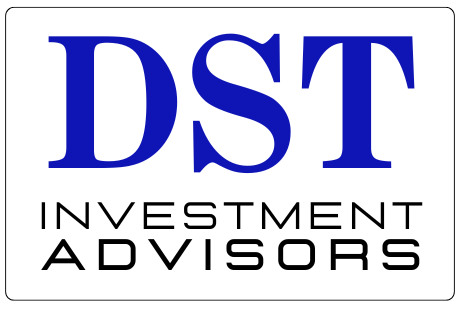DST Investment Advisors
Understanding The Qualified Opportunity Program
Backing economic rejuvenation endeavors, with the aim of capitalizing on tax-deferral tactics.
Qualified Opportunity Zone Program
Established through the Tax Cuts and Jobs Act of 2017, the Opportunity Zone program represents an initiative aimed at fostering economic development and rejuvenation. The fundamental concept behind this program revolves around redirecting capital gains generated from the sale of investment assets into designated lower-income areas known as Qualified Opportunity Zones (QOZs).
As an active participant in the Opportunity Zone program, you may be eligible for the following advantages:
Postponement of capital gains acknowledgment until December 31, 2026, provided that the gains are reinvested into opportunity zone assets within 180 days of selling capital assets. Tax payments on capital gains will be due when you file your 2027 taxes.
Eradication of capital gains tax obligations within opportunity zone investments, contingent upon holding the investment for a minimum of 10 years. This implies that capital gains accrued during this decade-long period will remain untaxed.

Although advantageous in numerous aspects, the regulations governing the Opportunity Zone program can be somewhat intricate. Furthermore, it presents a distinct risk profile compared to alternative property investments, such as Delaware Statutory Trusts (DSTs). For instance:
Investing capital gains resulting from the sale of capital assets into an Opportunity Zone is the sole permissible option. Conversely, DST investment criteria are more expansive, allowing for the exchange into ownership or the acquisition of DST units with any form of capital.
Depreciation recapture is a consideration in QOZ investments. In contrast, DST investments can facilitate the deferral of depreciation recapture through the 1031 exchange.
Opportunity Zones concentrate on specific, geographically delineated boundaries. In contrast, DSTs have no geographical restrictions, as long as the investments are within the United States.
Opportunity Zone Sponsors must adhere to property requirements related to “substantial improvement” for potential tax deferrals; DSTs do not impose such a requirement.
Ways To Invest in Opportunity Zones Funds
Opportunity Zone Funds, also known as Qualified Opportunity Funds (QOFs), represent partnerships or corporations established solely for the purpose of investing in Opportunity Zones. Instead of directly investing your funds into QOZs, you allocate your capital gains to these funds, which subsequently channel these funds into QOZ projects.
QOFs typically fall into one of two categories:
Identified funds have specific QOZ projects already in progress or under contract. The advantage of this fund structure lies in the upfront knowledge of the financed and developed project or projects. These funds offer greater transparency, and you have the opportunity to visit the development sites.
Semi-blind funds prioritize capital raising first, followed by the identification of suitable projects for investment. While these funds may not be as transparent as their identified counterparts and may entail higher risks, they offer increased liquidity. This can expedite the process of acquisition and closure.
As is customary with other financial investments or funds, conducting thorough due diligence on QOFs before investing is imperative. Key aspects to scrutinize include:
Track record: Given that the Opportunity Zone program is relatively new, comprehensive performance data for a QOF may not be readily available. In such cases, you can assess the Sponsor’s prior projects, risk mitigation strategies, returns, and other pertinent information.
Targeted property/properties: It is essential to understand the specific allocation of your funds and their intended utilization, whether it involves business property, stocks, or a partnership interest. For instance, in the case of real estate development-focused QOFs, evaluating the asset type’s viability and its position within the real estate cycle is crucial. If the focus is on stocks or a QOZ company, requesting a business plan and cash flow estimates is advisable. However, if you are investing in semi-blind funds, this information may not be readily available.
Geography: While there are over 8,700 designated Opportunity Zones, not all of them may align with individual investment preferences and risk tolerances. It is essential to analyze demographics, market data, location (both in terms of the country and within the specific QOZ), and competition.
Personnel: Familiarizing yourself with the individuals you are investing with is a prudent step. Reach out to the QOZ Sponsors and managers and take the time to learn about the team, including their tenure working together. This is also an opportune moment to seek answers regarding income distribution or tax preparation requirements.
The due diligence process should leave you with the confidence that the investment aligns with your objectives and goals. The label “Opportunity Zone” alone does not guarantee that an investment is suitable or practical for your specific investment objectives.
Investment Targets - Opportunity Zone Property
The main requirement for QOFs is that at least 90% of their assets must consist of Qualified Opportunity Zone Property (QOZP).
QOZP falls into three asset classes:
- Qualified Opportunity Zone Partnership Interests
- Qualified Opportunity Zone Stock
- Qualified Opportunity Zone Business Property
Qualified Opportunity Zone Partnership Interests
The QOZPI refers to a QOF that has a stake in a domestic partnership as long as:
- The QOF acquired the interest after December 31, 2017
- The interest is acquired solely in exchange for cash
- The partnership operates as a QOZB, or if new, the partnership is set up to operate as a QOZB
- During the holding period, the partnership qualifies as a QOZB
Through this structure, the Qualified Opportunity Fund becomes an actual partner of a Qualified Opportunity Zone Business by acquiring a stake in that business for cash (generated from QOF investors).
Qualified Opportunity Zone Stock
The underlying principle of QOZS shares some similarities with investing in a mutual fund, which subsequently allocates those funds into a company. In this context, the QOF invests in a Qualified Opportunity Zone Business by directly injecting equity into that entity.
This arrangement contrasts with Qualified Opportunity Zone Business Property (QOZBPs), which primarily encompass tangible assets (e.g., real estate or equipment situated within QOZs). Conversely, stock investments emphasize liquidity and equity.
Qualified Opportunity Zone Stock Requirements
- At least 90% of all assets must be Qualified Opportunity Zone Property
- At least 70% of total use of tangible property must take place within the QOZ
- The QOF must substantially improve the Opportunity Zone property by doubling the property’s adjusted basis within 30 months after purchase
When To Invest - Opportunity Zone Timelines
While the ability to take advantage of 5% and 10% of deferred gain expired on December 31, 2021, it’s still possible to benefit from Opportunity Zone investments. Keep in mind the following deadlines:
June 28, 2027
The last date in which to invest 2026 capital gains. This is also the final deadline to benefit from the 10-year gain exclusion through your QOF investment.
December 31, 2028
QOZ destinations expire. Still, QOFs are still active and can qualify to receive the 10-year gain exclusion.
June 28, 2037
The earliest date on which the final Opportunity Zone investments can be sold and qualify for the 10-year gain exclusion. The 10-year gain exclusion also starts ending on this date for deferred gains invested into QOZF from 2026 through June 28, 2027. If held for 10 years, those investments can now be sold.
The Opportunity Zone program can provide investors with the ability to defer capital gains tax or reduce capital gains liability entirely if investments are managed correctly.
This material is for general information and educational purposes only. Information is based on data gathered from what we believe are reliable sources. It is not guaranteed as to accuracy, does not purport to be complete and is not intended to be used as a primary basis for investment decisions. It should also not be construed as advice meeting the particular investment needs of any investor.
DST Investment Advisors do not provide tax or legal advice. This material is not a substitute for seeking the advice of a qualified professional for your individual situation.
No public market currently exists and one may never exist. DST programs are speculative and suitable only for Accredited Investors who do not anticipate a need for liquidity or can afford to lose their entire investment.
There is no guarantee that the investment objectives of any particular program will be achieved. Please consider all risks, fees and expenses associated with QOZ or DST investments. All real estate investments have the potential to lose value during the life of the investment.
The income stream and depreciation schedule for any investment property may affect the property owner’s income bracket and/or tax status.
Costs associated with a real estate transaction may impact investor’s returns and may outweigh the tax benefits. An unfavorable tax ruling may cancel deferral of capital gains and result in immediate tax liabilities.


